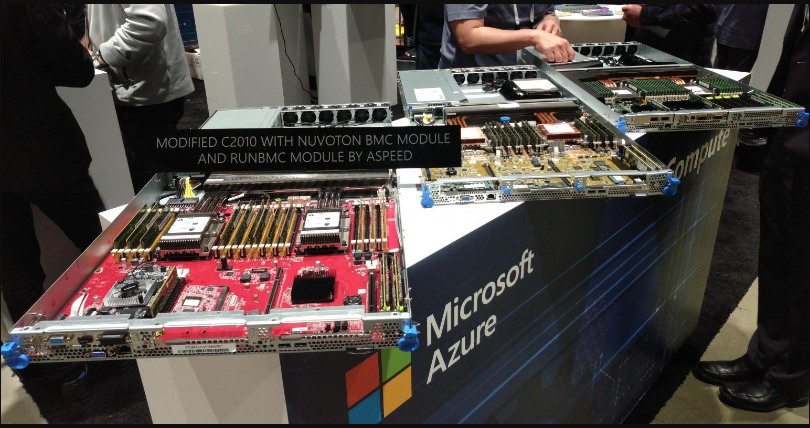The week's pick
Random Articles
Reseach Article
Network Resource Management Optimization for SDN based on Statistical Approach
| International Journal of Computer Applications |
| Foundation of Computer Science (FCS), NY, USA |
| Volume 177 - Number 6 |
| Year of Publication: 2017 |
| Authors: Mohammed Najm Abdullah, Afrah Salman Dawood, Ali Kamal Taqi |
 10.5120/ijca2017915766
10.5120/ijca2017915766
|
Mohammed Najm Abdullah, Afrah Salman Dawood, Ali Kamal Taqi . Network Resource Management Optimization for SDN based on Statistical Approach. International Journal of Computer Applications. 177, 6 ( Nov 2017), 5-13. DOI=10.5120/ijca2017915766
Abstract
Software-Defined Networking (SDN) is a new networking scheme in network technologies in which the data plane and network plane are separated. It can be considered as an umbrella including numerous sorts of network topologies, such as linear, minimal, tree, datacenter topologies and several others, proposed principally to solve problems of diverse nature of applications and different demands for resource management and performance. Where traditional networks would utilize a specific machine, for example, a firewall or load balancer, a Software-Defined Networking conveys an application that uses the controller (like OpenDaylight, Floodlight, OVS, etc.) to oversee information plane conduct. SDN can be implemented on Mininet emulator or NS3 simulator, which are both Linux basis but can also be implemented on other operating systems. One of important tools in network simulation is Fast Network Simulation Setup (FNSS); which is very useful toolchain that provides the ability of parsing different topologies from datasets or generating them artificially and implement a complete simulation scenario. FNSS supports different programming languages and network simulators using suitable APIs in the target simulator. In this paper, we proposed a solution to increase the performance of datacenter network topology implemented in python programming language on FNSS toolchain with Mininet emulator. The proposed solution is based on Linear Least Squares method to set different capacities to links based on average delays. This solution has been implemented and tested on two types of SND controllers which are OVS controller and Floodlight controller. Thus, a comparison based on these results has raised between these two controllers. In general, we choose video steaming application played on VLC media player to evaluate our solution. The results show that, as an average, the bandwidth increased from 953Kbps- 1.3Mbps between two hosts to 8.7Mbps- 13.9Mbps according to iperf command. The delay has been reduced in 89.6% in OVS controller and in 87.16% in Floodlight controller.
References
- L. Saino, C. Cocora, and G. Pavlou, A Toolchain for Simplifying Network Simulation Setup, in Proceedings of the 6th International ICST Conference on Simulation Tools and Techniques (SIMUTOOLS '13), Cannes, France, March 2013.
- L. Saino, C. Cocora, and G. Pavlou, A Toolchain for Simplifying Network Simulation Setup, SIMUTools 2013 March 5–7, Cannes, France, Copyright 2013 ICST, ISBN.
- D. Tuncer, M. Charalambides, S. Clayman, and G. Pavlou, Adaptive Resource Management and Control in Software Defined Networks, IEEE transactions on network and service management, vol. 12, no. 1, march 2015.
- D. Tuncer, M. Charalambides, S. Clayman, and G. Pavlou, On the Placement of Management and Control Functionality in Software Defined Networks, CNSM ManSDN/NFV paper, @2015 IFIP.
- P. A. Morreale, J. M. Anderson, Software Defined Networking: Design and Deployment, © 2015 by Taylor & Francis Group, LLC.
- R. Mijumbi, J. Serrat, J. R.-Loyolay, N. Boutenz, F. D. Turckz and S. Latre´, Dynamic Resource Management in SDN-based Virtualized Networks, ManSDN/NFV Full Paper, ISBN 978-3-901882-67-8, 10th CNSM and Workshop ©2014 IFIP.
- F. Ongaro, Enhancing Quality Of Service In Software-Defined Networks, Department of Computer Science and Engineering Master Degree in Computer Engineering, 2013-2014.
- B.J Asten, Increasing Robustness Of Software-Defined Networks, Fast Recovery Using Link Failure Detection and Optimal Routing Schemes, master of science thesis, Network Architectures and Services Group, Delft University of Technology, 2014.
- T. Zinner, M. Jarschel, A. Blenk, F. Wamser, and W. Kellerer, Dynamic Application-Aware Resource Management Using Software-Defined Networking: Implementation Prospects And Challenges, funded by the BMBF (Project ID 16BP12308), © 2014 IEEE.
- H. Li, Resource Optimizations in Software Defined Networking, Graduate Department of Computer and Information Systems University of Aizu, Ph.D. 2015.
- C. Xu, B. Chen, and H. Qian, Quality of Service Guaranteed Resource Management Dynamically in Software Defined Network, Journal of Communications Vol. 10, No. 11, November 2015.
- J. CHEN, Y. MA, H. KUO, C. YANG, AND W. HUNG, Software-Defined Network Virtualization Platform for Enterprise Network Resource Management, IEEE transactions on Emerging Topics in Computing, Date of Publication 22 September 2015; date of current version 8 June 2016. Digital Object Identi_er 10.1109/TETC.2015.2478757.
- X. Duan, A. M. Akhtar, and X. Wang, Software-Defined Networking-Based Resource Management: Data Offloading with Load Balancing in 5g HetNet, Duan et al. EURASIP Journal on Wireless Communications and Networking (2015) 2015:181.
- A.S. Dawood, M.N. Abdullah, A Survey and a Comparative Study on Software-Defined Networking, International Research Journal of Computer Science (IRJCS) ISSN: 2393-9842, issue 08, Volume 3 (August 2016).
- http://openvswitch.org/
- L. Saino, Fast Network Simulation Setup, Lab 1: AIMS conference 2014, Communications and Information Systems Group, Department of Electrical and Electronics Engineering, University College London.
- D. Cherney, T. Denton, and A. Waldron, Linear Algebra, Edited by Katrina Glaeser, Rohit Thomas and Travis Scrimshaw First Edition. Davis California, 2013.
- https://www.sdxcentral.com/sdn/definitions/sdn-controllers/open-source-sdn-controllers/what-is-floodlight-controller/
- P. M. Thet, P. Panwaree, and C. Aswakul, Design and Functionality Test of Chunked Video Streaming Over Emulated Multi-Path OpenFlow Network, ResearchGate, Conference Paper · June 2015.
- B. Sumanth, Designing an Openflow Controller for Data Delivery with End-to-End QoS Over Software Defined Networks, Master of Technology, in Department of Computer Science and Engineering Indian Institute of Technology, Kharagpur, May 2016.
Index Terms
Keywords

